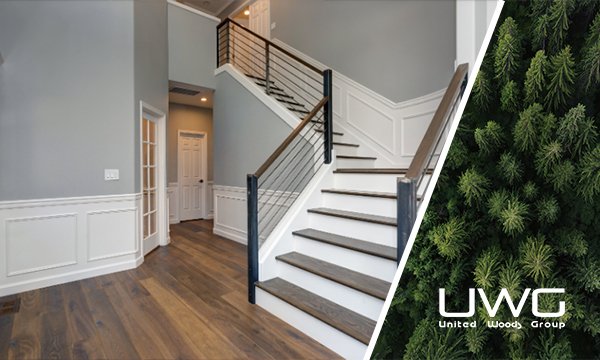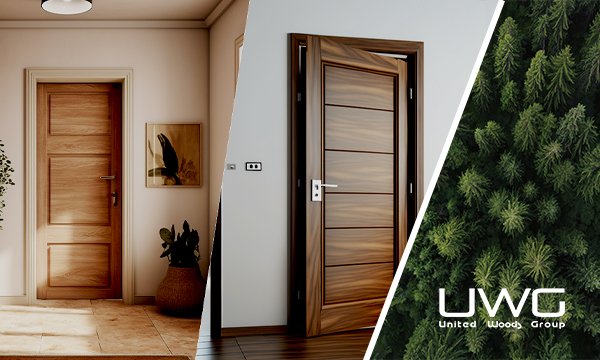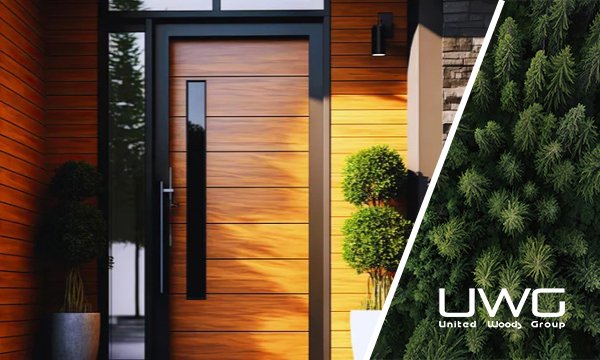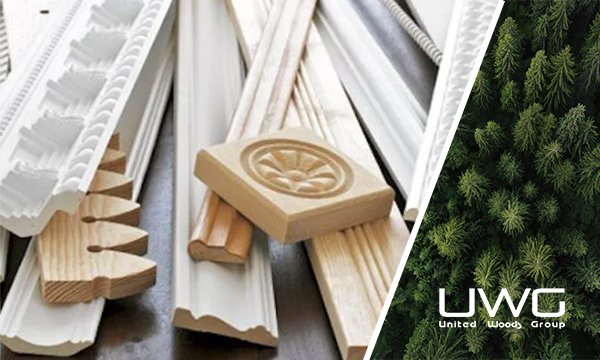When it comes to choosing the right door frame for your project, understanding the various types available is crucial. Different door frames offer unique benefits, whether you prioritize durability, aesthetics, or functionality. In this article, we’ll explore the different types of door frames to help wholesalers and contractors make informed decisions.
The main types of door frames include wood, metal, and engineered frames. Wooden frames provide a traditional and versatile look, ideal for various decor styles. Metal frames are known for their durability and strength, making them suitable for commercial settings. Engineered frames, such as LVL and MDF, offer enhanced stability and uniformity. Each type has specific advantages depending on the application.
- What is a Door Jamb vs. Door Frame?
- What is an Interior Door Frame Called?
- What are the Different Styles of Door Jambs?
- What is Trim Around Doors Called?
- Different Types of Door Frames Exterior
- Types of Door Frame Materials
- Types of Door Frames and Linings
- Types of Metal Door Frames
- Rabbeted Door Jamb
- Hollow Metal Door Frame Types
- Single Rabbet Door Frame
- Summary
Let’s delve deeper into each type to understand their characteristics and benefits.
What is a Door Jamb vs. Door Frame?
A door jamb is an individual section of a door frame. The vertical components are side jambs, and the top horizontal component is the head jamb. Together, they form the complete door frame, providing the structure needed to hang and secure a door. This differentiation is crucial for both installation and repair processes, as understanding each part’s role can streamline these tasks.
In addition to these basic components, door frames can include additional elements such as sills and thresholds, especially in exterior doors. The sill is the bottom part of the frame, which often includes a threshold that provides a weather-resistant barrier. These components work together to ensure that the door functions properly, providing security, insulation, and aesthetic appeal.

What is an Interior Door Frame Called?
Interior door frames are often referred to as casing or trim. Casing typically denotes the interior framing, while Brickmould is the term used for exterior framing. These components not only enhance the door’s appearance but also conceal the transition between the wall and the jamb. The choice of casing can significantly impact the room’s aesthetic, making it an important consideration for contractors.
Casing comes in various styles and profiles, allowing for customization based on the architectural style of the building. For instance, colonial casing features a more traditional, ornate design, while modern casing offers a sleek, minimalistic look. The material chosen for casing can also vary, with options including wood, MDF, and even PVC for moisture-prone areas like bathrooms and kitchens.

What are the Different Styles of Door Jambs?
Door jambs come in two main styles: rabbeted and plain. Rabbeted jambs have a groove cut into them to receive the door, providing a more secure fit. Plain jambs are simpler and often used for basic installations. The style chosen can affect both the door’s performance and its visual appeal, making it a key decision in both residential and commercial projects.
Rabbeted jambs are particularly beneficial for exterior doors as they help create a tighter seal against the elements, enhancing energy efficiency and security. Plain jambs, on the other hand, are typically easier and quicker to install, making them a cost-effective option for interior doors. Additionally, rabbeted jambs can be double or single rabbeted, offering further customization depending on the door type and application.

What is Trim Around Doors Called?
The trim around doors is known as casing. Interior door casing enhances the look of the door and hides the gap between the wall and the door frame. It is both decorative and functional, adding to the overall aesthetic of the space. Properly installed casing can also protect the wall edges from damage, adding longevity to the door installation.
Casing is available in a variety of profiles and sizes, allowing for customization to match the architectural style and personal preferences. For example, a home with a traditional design might feature wide, elaborate casing, while a contemporary home might use narrower, streamlined trim. The material used for casing can also vary, including options such as wood, MDF, and vinyl, each offering different benefits in terms of durability, cost, and ease of installation.

Different Types of Door Frames Exterior
Exterior door frames need to withstand weather conditions and provide security. Common materials include metal, which offers strength and durability, and treated wood, which provides a natural look with added resistance to the elements. Each material has its own advantages, depending on the specific requirements of the exterior environment.
Wooden exterior door frames are often treated with preservatives to resist rot and insect damage. They offer a traditional, warm appearance that can be painted or stained to match the exterior decor. Metal frames, typically made from steel or aluminum, are highly durable and often used in commercial applications due to their strength and fire resistance. They can be painted or powder-coated for additional protection against the elements.
In addition to wood and metal, composite materials are also used for exterior door frames. These materials combine the aesthetics of wood with the durability and low maintenance of synthetic materials, making them an increasingly popular choice for modern constructions. Composite frames are resistant to warping, cracking, and moisture, offering long-term performance with minimal upkeep.

Types of Door Frame Materials
Door frames can be made from various materials, including wood, metal, and engineered products like MDF and LVL. Each material has its own set of properties, making them suitable for different applications and environments. For example, metal frames are preferred in commercial settings for their strength, while wooden frames are often chosen for their aesthetic versatility.
Wooden door frames are available in a variety of species, each offering unique characteristics. Hardwood species like oak and mahogany are prized for their strength and beauty, making them ideal for high-end residential projects. Softwoods like pine and fir are more cost-effective and easier to work with, making them a common choice for interior frames.
Metal door frames, often made from steel or aluminum, are valued for their durability and resistance to fire, pests, and moisture. They are commonly used in commercial and industrial settings where these properties are essential. Additionally, metal frames can be customized with various finishes and coatings to enhance their appearance and performance.
Engineered door frames, such as those made from MDF (medium-density fiberboard) and LVL (laminated veneer lumber), offer a high degree of stability and uniformity. MDF frames are smooth and easy to paint, making them a popular choice for interior applications. LVL frames are exceptionally strong and resistant to warping, making them suitable for both interior and exterior use.

Types of Door Frames and Linings
Door frames and linings are essential for proper door installation. Linings can be matched with the frame material for consistency in appearance and performance. Options include pre-hung frames, which come with the door already fitted, and custom-built frames for unique specifications. Understanding these options can help in selecting the most suitable frame for the project.
Pre-hung door frames simplify the installation process, as they come with the door already mounted in the frame. This ensures a perfect fit and alignment, reducing the time and effort required for installation. Pre-hung frames are available for both interior and exterior doors, in a variety of materials and finishes.
Custom-built door frames, on the other hand, offer greater flexibility in terms of design and dimensions. These frames can be tailored to fit non-standard openings or to match specific architectural styles. Custom frames are often used in high-end residential projects or in historical renovations where preserving the original aesthetic is important.

Types of Metal Door Frames
Metal door frames are typically made from steel or aluminum. They are robust and offer excellent fire resistance. Common types include hollow metal frames used in commercial buildings and custom metal frames designed for specific applications. Their strength and durability make them a reliable choice for high-traffic areas.
Hollow metal door frames are constructed from sheets of steel or aluminum that are formed into a box-like profile. These frames are available in various thicknesses and finishes, allowing for customization based on the specific requirements of the project. Hollow metal frames are commonly used in commercial buildings, schools, and hospitals, where durability and security are paramount.
Custom metal door frames can be designed to meet unique specifications, including non-standard sizes, shapes, and finishes. These frames are often used in specialized applications, such as secure facilities, where additional security features are required. Custom metal frames can also be integrated with other security systems, such as access control and surveillance, to provide a comprehensive solution.

Rabbeted Door Jamb
Rabbeted door jambs have a stepped edge that provides a secure fit for the door. This design is especially useful for external doors, where additional security and weatherproofing are required. The rabbeted design helps ensure a tighter seal against the elements, enhancing the door’s performance in harsh conditions.
Rabbeted jambs can also be used in interior applications where a more secure and precise fit is desired. They are particularly beneficial in environments where sound insulation is important, such as offices and recording studios. The stepped design of the rabbeted jamb helps to minimize gaps and reduce noise transmission, contributing to a quieter and more comfortable space.

Hollow Metal Door Frame Types
Hollow metal door frames come in various profiles, including cased open, single rabbet, double rabbet, and double egress. Each type is suited for different applications, from commercial spaces to specialized installations requiring enhanced security and durability. Understanding the specific needs of the installation site can guide the selection of the appropriate frame type.
Cased open frames are the simplest type of hollow metal frame, with a single continuous profile that surrounds the door opening. These frames are easy to install and provide a clean, modern look. Single rabbet frames feature a stepped edge on one side, providing a more secure fit for the door. Double rabbet frames have stepped edges on both sides, offering maximum security and weather resistance.
Double egress frames are designed for use in areas where doors need to swing in both directions, such as hospital corridors and emergency exits. These frames allow for easy passage in either direction, enhancing safety and accessibility. Hollow metal frames can also be customized with additional features, such as fire ratings, soundproofing, and bullet resistance, to meet specific project requirements.

Single Rabbet Door Frame
Single rabbet door frames have one rabbeted edge, providing a clean and straightforward installation. They are often used in interior applications where a simple and efficient door frame is needed. This type of frame is a common choice for residential projects due to its ease of installation and cost-effectiveness.
Single rabbet frames can be used with a variety of door types, including solid core, hollow core, and panel doors. They are particularly well-suited for interior applications where aesthetics and simplicity are key considerations. Single rabbet frames can be painted or stained to match the surrounding decor, providing a seamless and attractive finish.

Summary
Choosing the right door frame involves understanding the different types available and their specific applications. Whether you need the classic look of wood, the durability of metal, or the precision of engineered frames, each option offers unique benefits. For wholesalers and contractors, making an informed choice ensures the longevity and functionality of the installation.
By considering factors such as material, style, and application, you can select the door frame that best meets the needs of your project. With the right choice, you’ll enhance the security, aesthetics, and performance of the doors, providing long-lasting value to your clients.








